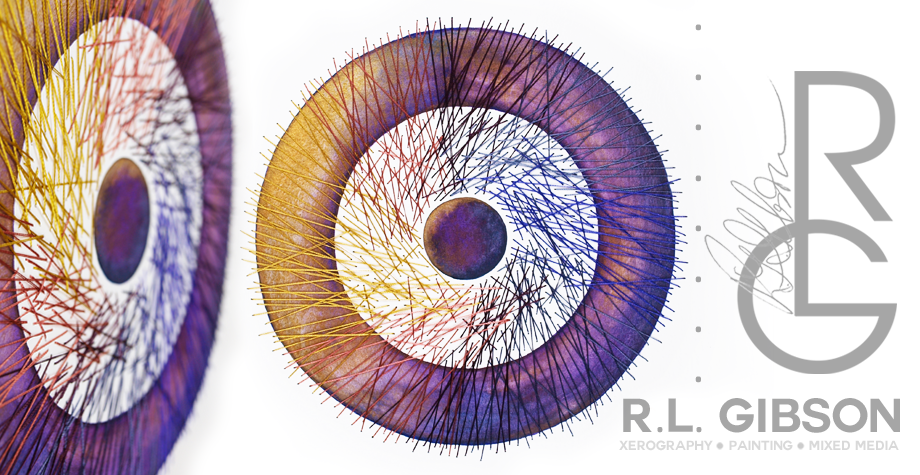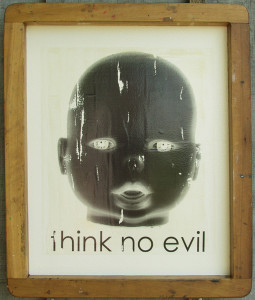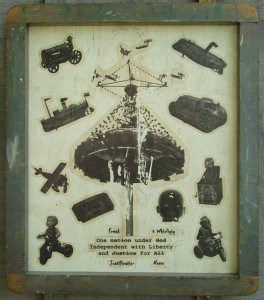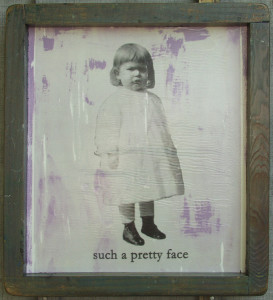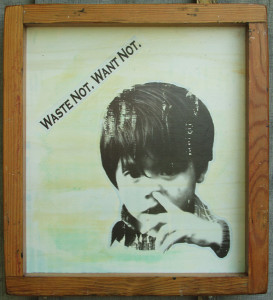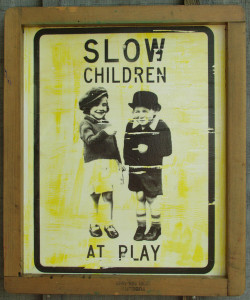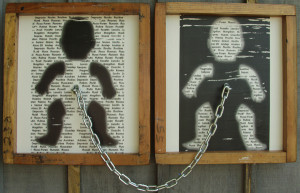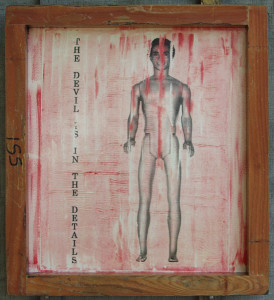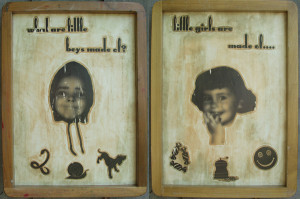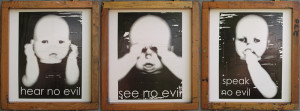#DIKY by Artist R.L. Gibson ©2014-15
__________________________
Series explores the question, “Who defines a language?” Is a language defined by the user or some other hierarchy of trusted caretakers? Why are people often offended by truth? How does context change definition & intention? The answers remain unclear, and the questions persist.
 I am deeply influenced by my role as a southern born & reared woman. I have a great love of southern language with all of its innuendos, euphemisms & passive tones that make up a long, and frequently sordid, history of eccentricities, unpopular opinions & niceties. I was spoon-fed ‘If you can’t say something nice…’ but it wasn’t well digested. Does the adage ‘Hear No Evil, See No Evil, Speak No Evil’ function without ‘Think No Evil?’ This work juxtaposes high moral standards against low moral constancy. Why is ‘Speak No Evil’ an acceptable substitute for ‘Think No Evil?’.” –Artist R.L. Gibson
I am deeply influenced by my role as a southern born & reared woman. I have a great love of southern language with all of its innuendos, euphemisms & passive tones that make up a long, and frequently sordid, history of eccentricities, unpopular opinions & niceties. I was spoon-fed ‘If you can’t say something nice…’ but it wasn’t well digested. Does the adage ‘Hear No Evil, See No Evil, Speak No Evil’ function without ‘Think No Evil?’ This work juxtaposes high moral standards against low moral constancy. Why is ‘Speak No Evil’ an acceptable substitute for ‘Think No Evil?’.” –Artist R.L. Gibson
This series originally opened at Gallery 107 North, formally in Winnsboro, SC (now closed). Click any image below to view as a slideshow. Below the curator’s note, please find images for this series.
__________________________
Curator Michaela Pilar Brown says of Speak No Evil:
__________________________
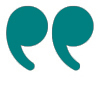 In this series of xerographic prints, Gibson challenges patriarchal conventions about truth, morality, and freedom in a culture increasingly driven along a path to homogeneity, and a return to the exclusion and marginalization of unpopular opinions and ideas. Gibson employs the use of text throughout these images to call attention to the use of language. Words attached to art imbue meaning and effect interpretation often more powerfully than images alone. It must be noted that Gibson makes use of the red editor’s pen. The images are simple, and words are used with brevity. Challenging large ideas with such an economy of words and simple images leaves room in Gibson’s work for both comic relief and austerity.
In this series of xerographic prints, Gibson challenges patriarchal conventions about truth, morality, and freedom in a culture increasingly driven along a path to homogeneity, and a return to the exclusion and marginalization of unpopular opinions and ideas. Gibson employs the use of text throughout these images to call attention to the use of language. Words attached to art imbue meaning and effect interpretation often more powerfully than images alone. It must be noted that Gibson makes use of the red editor’s pen. The images are simple, and words are used with brevity. Challenging large ideas with such an economy of words and simple images leaves room in Gibson’s work for both comic relief and austerity.
“Her use of text is both a nod to its literary origin, and a subversive tyrannical act, to make the viewer question both meaning and use in a broader context. In the work ‘Such a Pretty Face,’ Gibson addresses the notion of hiding criticism in a compliment. It begs the questions, in a postmodern world, a world of rapidly exchanged text, ticker tape, and irretrievable digital burps, who owns the language? Can words live in static form? Do they evolve? When are they weapon, propaganda, song?
“In the triptych ‘See, Hear & Speak,’ Gibson addresses the notion of turning a blind eye to evil. It is an image and phrase familiar to most Americans, so familiar in fact that the phrase ‘see no hear no speak no evil’ conjures images of a monkey covering its eyes, mouth and ears and the reverse. A doll’s head has replaced the monkeys. This simple change destroys the kitschy-ness of the image, and presents a more human question. The doll’s head floating against a flat background robs it of its innocence. By ignoring evil are we not responsible for its growth?”
—Michaela Pilar Brown
curator
Gallery 107 North
